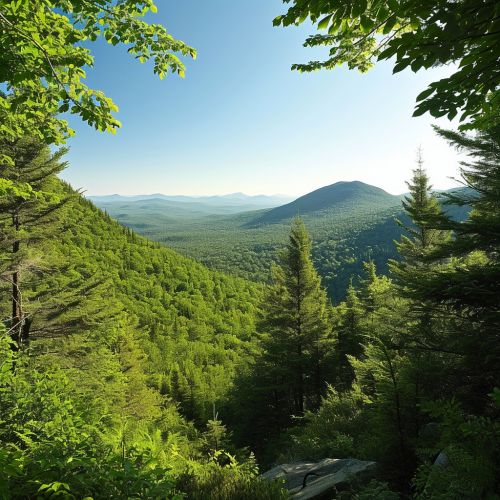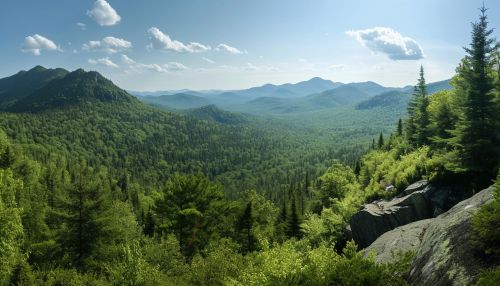New York Mountains
Geography
New York is home to a diverse range of mountains, each with its own unique geological and ecological characteristics. The state's mountainous regions can be broadly divided into three major sections: the Adirondacks, the Catskills, and the Appalachian Mountains.


Adirondack Mountains
The Adirondacks are a large mountain range located in the northeastern part of the state. They are part of the larger Appalachian Mountain system, but are geologically distinct from the rest of the Appalachians. The Adirondacks are characterized by their dome shape and are composed of ancient rocks that are over a billion years old, making them among the oldest mountains in North America.
Catskill Mountains
The Catskills, located in southeastern New York, are a mature dissected plateau, an uplifted region that has been eroded into sharp relief. They are not, in fact, mountains in the traditional sense, but a plateau that has been eroded into a mountain-like landscape. The Catskills are home to a rich variety of plant and animal species, including a number of endangered and threatened species.
Appalachian Mountains
The Appalachians in New York, also known as the Appalachian Plateau, are part of a vast mountain chain that stretches from Alabama to Canada. In New York, the Appalachians are characterized by rolling hills and valleys, and are home to the state's highest peak, Mount Marcy.
Geology
The mountains of New York are a testament to the state's complex geological history. From the ancient rocks of the Adirondacks to the eroded plateau of the Catskills, each mountain range tells a unique geological story.
Adirondack Mountains
The Adirondacks are composed of Precambrian rocks that are over a billion years old, with the highest peaks composed of anorthosite, a type of igneous rock that is rich in the mineral plagioclase. The mountains were formed during the Grenville Orogeny, a mountain-building event that occurred over a billion years ago.
Catskill Mountains
The Catskills are composed primarily of sedimentary rocks, including shale, sandstone, and conglomerate, that were deposited in a shallow sea during the Devonian period, about 380 to 360 million years ago. The mountains were formed by uplift and erosion, rather than by the folding and faulting that typically create mountain ranges.
Appalachian Mountains
The Appalachians in New York are composed of sedimentary rocks, including sandstone and shale, that were deposited in a shallow sea during the Paleozoic era, about 542 to 251 million years ago. The mountains were formed by a series of orogenic events, or mountain-building episodes, that occurred over hundreds of millions of years.
Ecology
The mountains of New York are home to a diverse range of plant and animal species, each adapted to the unique conditions of their mountainous habitat.
Adirondack Mountains
The Adirondacks are home to a rich variety of plant and animal species, including black bears, white-tailed deer, bobcats, and a variety of bird species. The region is also home to a number of rare plant species, including the Adirondack violet and the alpine azalea.
Catskill Mountains
The Catskills are home to a diverse range of plant and animal species, including black bears, bobcats, coyotes, and a variety of bird species. The region is also home to a number of rare plant species, including the Catskill bellwort and the mountain spleenwort.
Appalachian Mountains
The Appalachians in New York are home to a diverse range of plant and animal species, including black bears, white-tailed deer, bobcats, and a variety of bird species. The region is also home to a number of rare plant species, including the Appalachian sedge and the mountain goldenrod.
